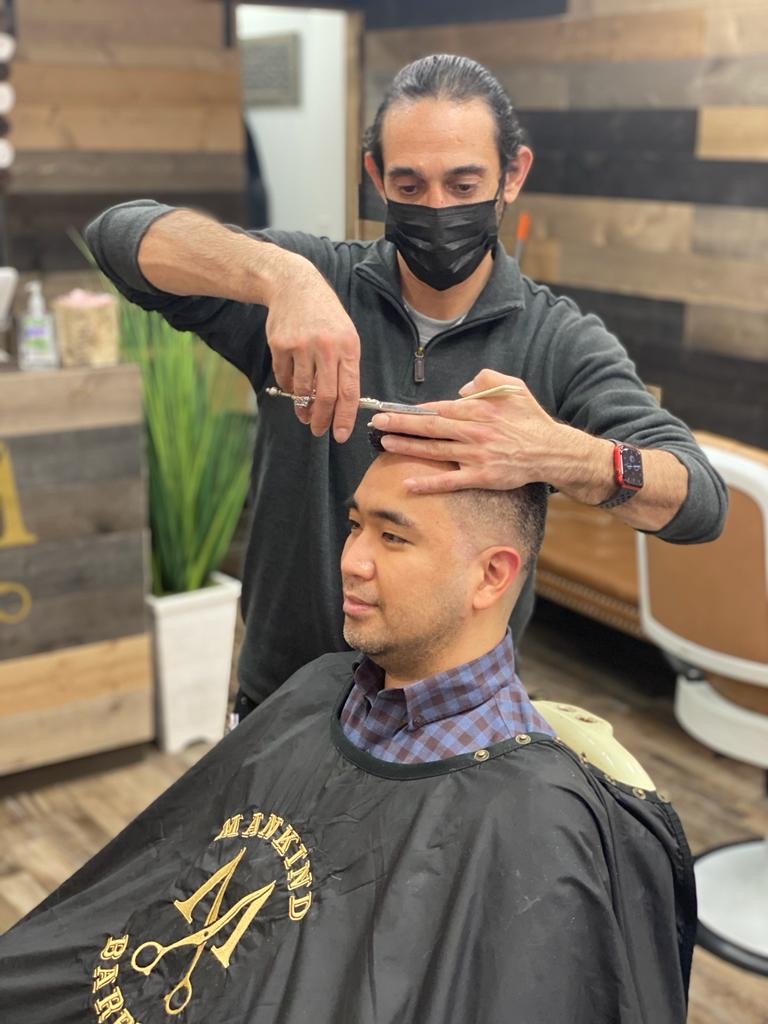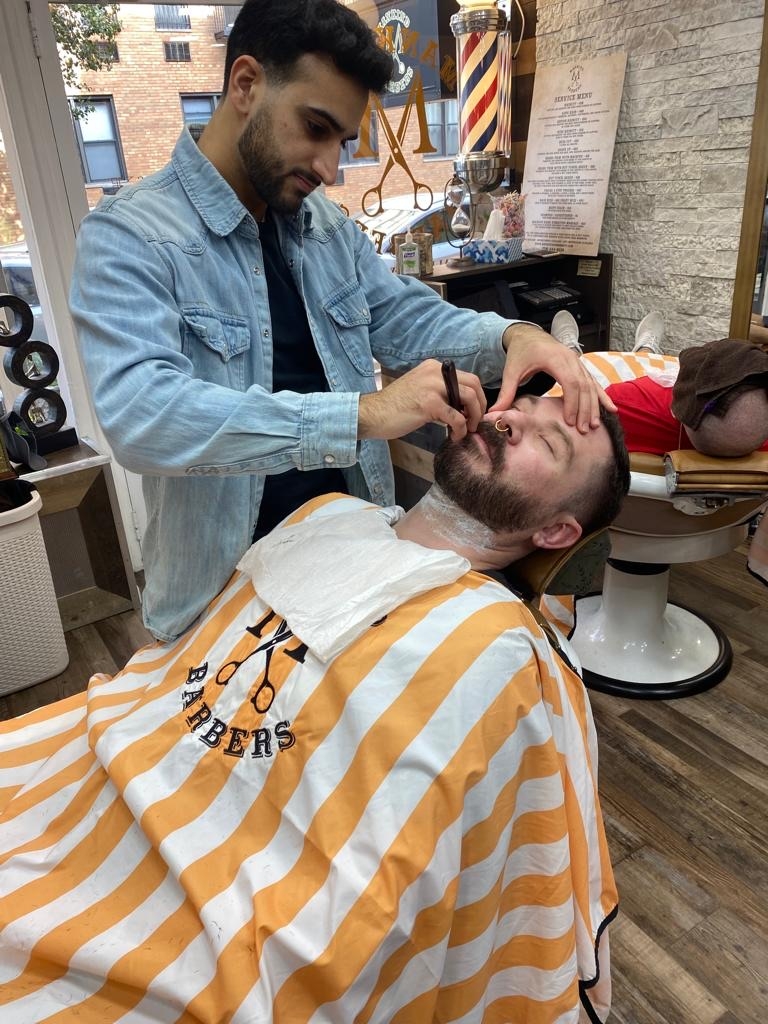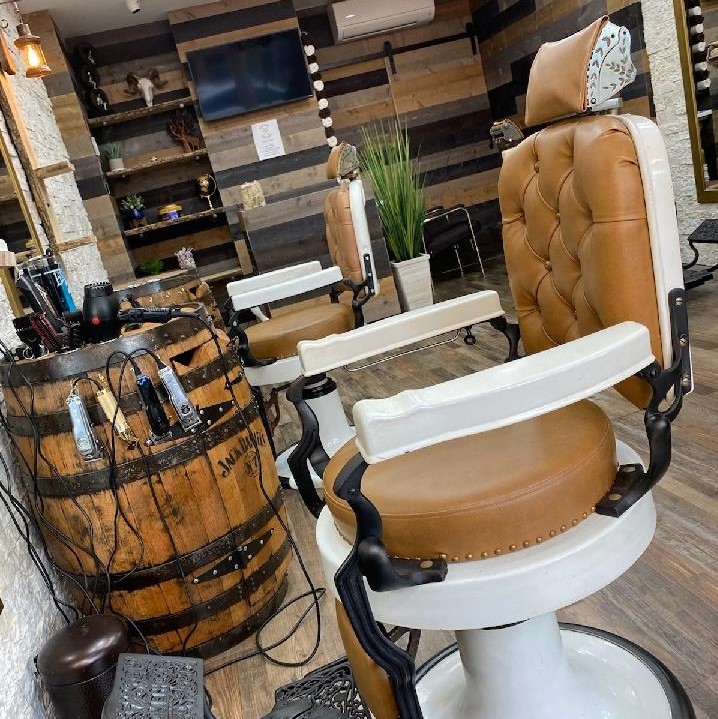

Barber shears should be sharpened regularly to maintain their cutting performance. It is recommended to sharpen them every 3 to 6 months, depending on how frequently they are used. Dull shears can cause hair to be pulled or damaged, leading to an uneven haircut and potential client dissatisfaction.
There are various types of barber shears available, including straight shears, thinning shears, and texturizing shears. Each type serves a different purpose in hair cutting. Straight shears are used for basic cutting, thinning shears are used to remove bulk from the hair, and texturizing shears are used to add texture and volume to the hair. They differ in terms of blade design, handle ergonomics, and cutting techniques.
Understanding curl pattern and hair type has become hot topic and for good reason – being able to advise clients on their hair allows them to unlock its potential. Below, Boucléme founder and curl specialist, Michele Scott-Lynch, gives a four-step guide to curl type… Step One: Curl Type Identifying the curl type is much easier The post Understanding Your Client’s Hair Type appeared first on Modern Barber.
Posted by on 2024-03-19
The Fashion Retail Academy (FRA) announces that it has acquired the capital’s leading beauty school, the London College of Beauty Therapy (LCBT). As a successful education charity, having trained over 13,000 students for entry-level roles in fashion and retail since 2005, the FRA’s acquisition of LCBT marks a significant expansion of its commitment to provide industry-backed vocational The post Fashion Retail Academy Acquires the London College of Beauty Therapy appeared first on Modern Barber.
Posted by on 2024-03-19
The Lions Barber Collective has been at the forefront of championing mental health within the hair and barbering industry since 2015 and now its asking you to join the pride and volunteer at events across the UK. It recognises the unique role barbers and hairdressers play as trusted confidants for their clients. By fostering a safe The post Join the Pride: Volunteer for Lions Barber Collective Mental Health Charity appeared first on Modern Barber.

Posted by on 2024-03-19
Modern Barber caught up with local high street barber, Carlo DePetrillo, to get his insight after 40 years in the business. From the need for regulation to the importance of creating a community, it was an eye opening chat on how far the industry has come, and the recent changes we’ve seen due to the The post The High Street Barber: Carlo DePetrillo appeared first on Modern Barber.

Posted by on 2024-03-19
Spring is just about here and with that in mind, we caught up with award winning men’s hairdresser, Jim Shaw, to get his predictions on Spring 2024 hair trends and what will be the most highly requested cuts and styles… Lead image: Aimar Ek Spring 2024 Hair Trends Tight Fade For clients looking for a The post Spring 2024 Hair Trends for Men appeared first on Modern Barber.

Posted by on 2024-03-19
Barber shears can be used for both wet and dry hair cutting techniques. However, it is important to note that some shears are specifically designed for wet cutting, while others are better suited for dry cutting. It is essential to choose the right type of shears based on the cutting technique being used to achieve the best results.

To keep barber shears in optimal condition for longer periods of time, it is important to clean and oil them regularly. After each use, wipe the blades clean with a soft cloth and apply a few drops of shear oil to prevent rust and corrosion. Additionally, store them in a protective case or pouch to avoid damage and maintain sharpness.
When purchasing high-quality barber shears, key features to look for include the material of the blades (such as stainless steel or titanium), the type of handle (such as offset or crane), the blade length, and the tension adjustment screw. It is also important to consider the reputation of the brand and read reviews from other barbers to ensure the shears meet professional standards.

Barbers can properly sanitize and disinfect their shears by first cleaning them with soap and water to remove any hair or debris. Then, they can use a disinfectant spray or wipe specifically designed for shears to kill bacteria and prevent infections. It is important to follow the manufacturer's instructions for proper disinfection to ensure the shears are safe to use on clients.
Using barber shears effectively for different hair cutting styles and textures may require specialized techniques and training. Barbers should be familiar with various cutting techniques, such as point cutting, slide cutting, and blunt cutting, to achieve different results. They should also be knowledgeable about how to adjust the tension of the shears and choose the right type of shears for each cutting task. Continuous practice and education are essential for mastering the use of barber shears in the salon.

Barber capes with snaps offer several advantages over those with velcro closures. The snaps provide a secure and adjustable fit, ensuring that the cape stays in place during haircuts. This feature allows for easy removal and reattachment, making it convenient for barbers to adjust the cape as needed. Additionally, snaps are more durable than velcro closures, as they are less likely to wear out or become less effective over time. The snaps also create a sleek and professional look, enhancing the overall appearance of the barber while working. Overall, barber capes with snaps offer a more reliable and long-lasting solution for barbers looking to provide a comfortable and efficient experience for their clients.
When using a straight razor for shaving, it is important to follow several safety precautions to prevent accidents and injuries. First, ensure that the razor blade is sharp and properly maintained to avoid nicks and cuts. It is also recommended to use a shaving cream or gel to provide lubrication and reduce friction on the skin. Additionally, always shave in the direction of hair growth to minimize irritation and ingrown hairs. Be sure to hold the razor at the correct angle and apply gentle pressure to avoid cutting yourself. After shaving, rinse the razor thoroughly and store it in a safe place away from children and pets. By following these safety precautions, one can enjoy a smooth and safe shaving experience with a straight razor.
To maintain the optimal temperature for a hot lather machine, it is essential to regularly check the thermostat settings and ensure they are calibrated correctly. Additionally, it is important to monitor the water level in the machine to prevent overheating or cooling. Proper insulation around the machine can help retain heat and regulate temperature fluctuations. Regular cleaning and maintenance of the heating elements and water reservoir can also contribute to consistent temperature control. Using high-quality shaving cream specifically designed for hot lather machines can help maintain the desired temperature and prevent clogs or malfunctions. Overall, following these steps can help ensure the hot lather machine operates at its optimal temperature for a smooth and comfortable shaving experience.
To effectively clean hair buildup from clipper blades, one can start by removing the blades from the clipper and using a small brush or toothbrush to gently scrub away any excess hair. Next, soaking the blades in a mixture of warm water and blade wash solution can help to break down any stubborn buildup. Using a blade wash solution specifically designed for clipper blades can help to disinfect and lubricate the blades as well. After soaking, thoroughly dry the blades and reattach them to the clipper. Regular maintenance and cleaning of clipper blades can help to prolong their lifespan and ensure a smooth cutting experience.
To properly adjust the blade depth on an adjustable safety razor, one must first ensure that the razor is fully assembled and ready for use. Next, locate the adjustment dial or knob on the razor handle, which is typically found near the base of the razor head. Carefully turn the dial or knob in the desired direction to adjust the blade depth to the desired setting. It is important to make small adjustments and test the razor on a small area of skin to ensure the blade depth is set correctly. Some razors may have numbered settings to indicate the blade depth level, while others may require a more manual adjustment process. Once the blade depth is set to the desired level, tighten the adjustment dial or knob to secure the blade in place before shaving. Remember to always exercise caution when adjusting the blade depth to prevent any accidents or injuries.
When selecting the best type of blade for a shavette razor, it is important to consider the sharpness, durability, and compatibility with the razor. Many users prefer stainless steel blades for their longevity and resistance to rust. Additionally, platinum-coated blades are known for their smooth shaving experience. Feather blades are highly regarded for their sharpness and precision, making them a popular choice among experienced shavers. It is recommended to experiment with different brands and types of blades to find the one that best suits individual preferences and skin types. Ultimately, the best blade for a shavette razor will depend on personal preference and shaving technique.